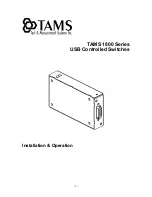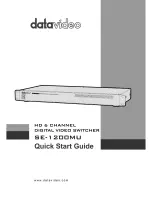
49
Service Provider Bridging
Service provider bridging is supported on Dell Networking OS.
VLAN Stacking
VLAN stacking, also called Q-in-Q, is defined in IEEE 802.1ad — Provider
Bridges
, which is an amendment
to IEEE 802.1Q — Virtual
Bridged Local Area Networks
. It enables service providers to use 802.1Q
architecture to offer separate VLANs to customers with no coordination between customers, and
minimal coordination between customers and the provider.
Using only 802.1Q VLAN tagging all customers would have to use unique VLAN IDs to ensure that traffic
is segregated, and customers and the service provider would have to coordinate to ensure that traffic
mapped correctly across the provider network. Even under ideal conditions, customers and the provider
would still share the 4094 available VLANs.
Instead, 802.1ad allows service providers to add their own VLAN tag to frames traversing the provider
network. The provider can then differentiate customers even if they use the same VLAN ID, and providers
can map multiple customers to a single VLAN to overcome the 4094 VLAN limitation. Forwarding
decisions in the provider network are based on the provider VLAN tag only, so the provider can map
traffic through the core independently; the customer and provider only coordinate at the provider edge.
At the access point of a VLAN-stacking network, service providers add a VLAN tag, the S-Tag, to each
frame before the 802.1Q tag. From this point, the frame is double-tagged. The service provider uses the
S-Tag, to forward the frame traffic across its network. At the egress edge, the provider removes the S-
Tag, so that the customer receives the frame in its original condition, as shown in the following
illustration.
898
Service Provider Bridging
Summary of Contents for S4820T
Page 1: ...Dell Configuration Guide for the S4820T System 9 8 0 0 ...
Page 282: ...Dell 282 Control Plane Policing CoPP ...
Page 622: ...Figure 81 Configuring Interfaces for MSDP 622 Multicast Source Discovery Protocol MSDP ...
Page 623: ...Figure 82 Configuring OSPF and BGP for MSDP Multicast Source Discovery Protocol MSDP 623 ...
Page 629: ...Figure 86 MSDP Default Peer Scenario 2 Multicast Source Discovery Protocol MSDP 629 ...
Page 630: ...Figure 87 MSDP Default Peer Scenario 3 630 Multicast Source Discovery Protocol MSDP ...
Page 751: ...10 11 5 2 00 00 05 00 02 04 Member Ports Te 1 2 1 PIM Source Specific Mode PIM SSM 751 ...
Page 905: ...Figure 112 Single and Double Tag First byte TPID Match Service Provider Bridging 905 ...
Page 979: ...6 Member not present 7 Member not present Stacking 979 ...
Page 981: ...storm control Storm Control 981 ...
Page 1103: ...Figure 134 Setup OSPF and Static Routes Virtual Routing and Forwarding VRF 1103 ...
















































